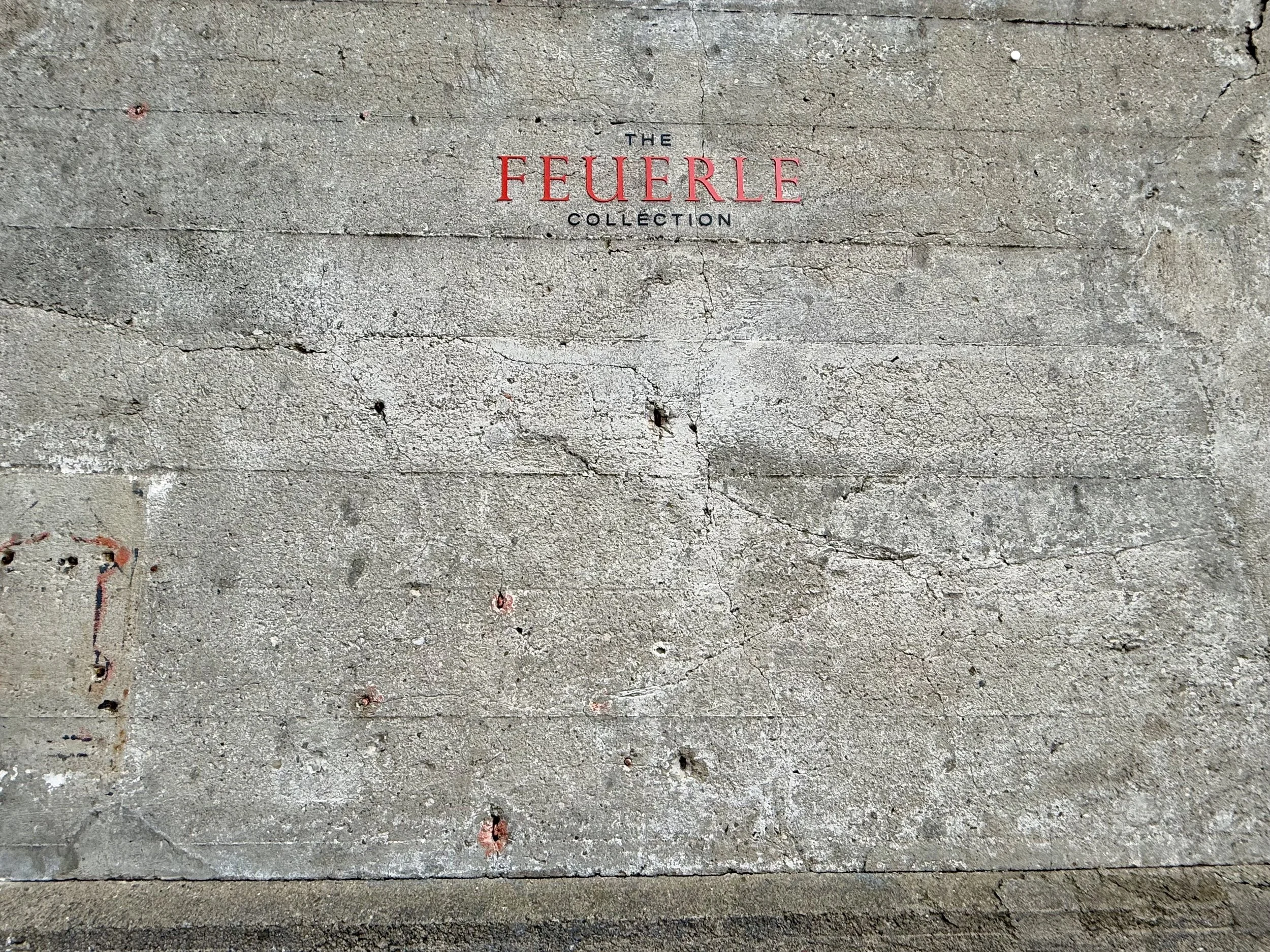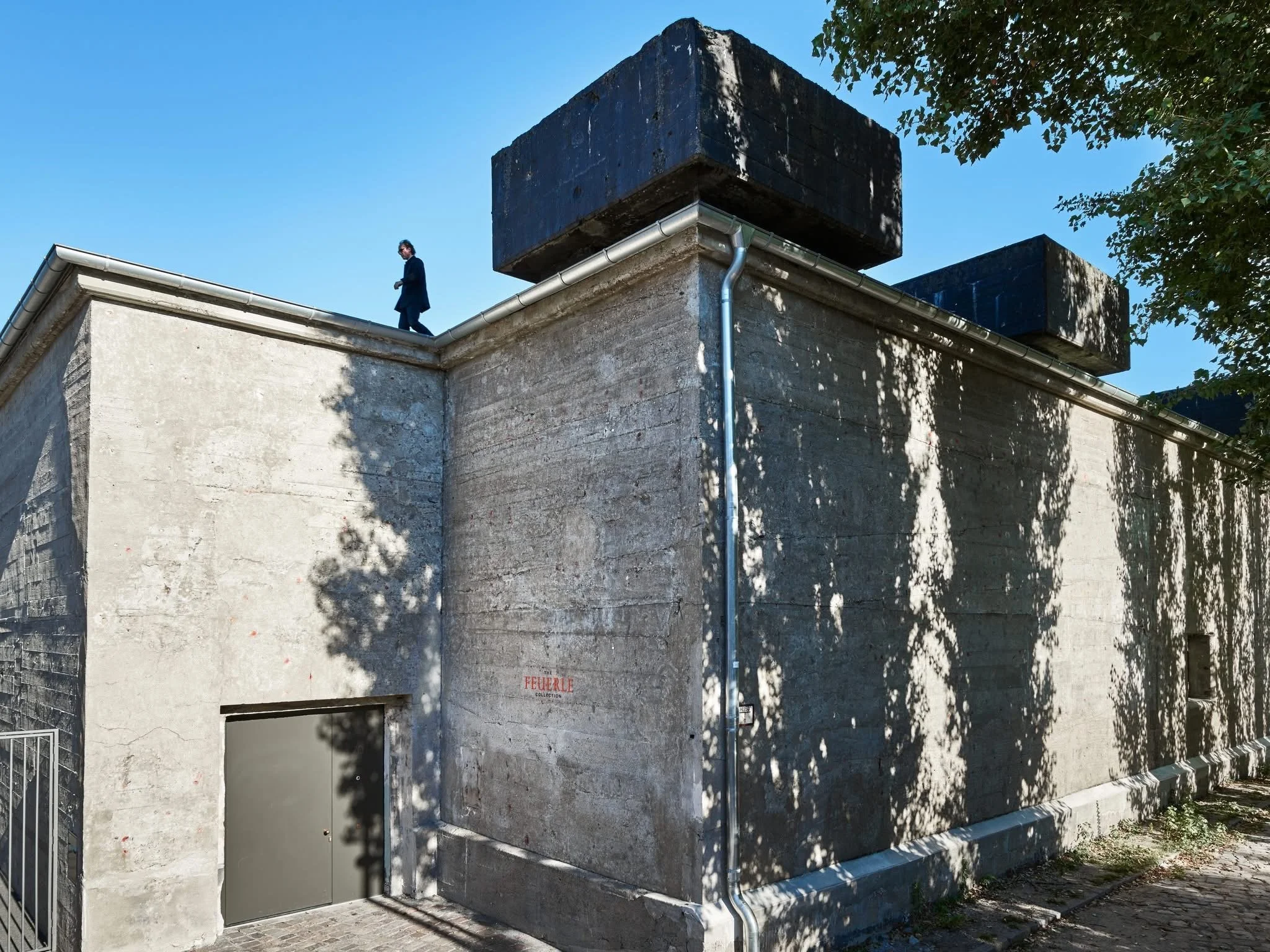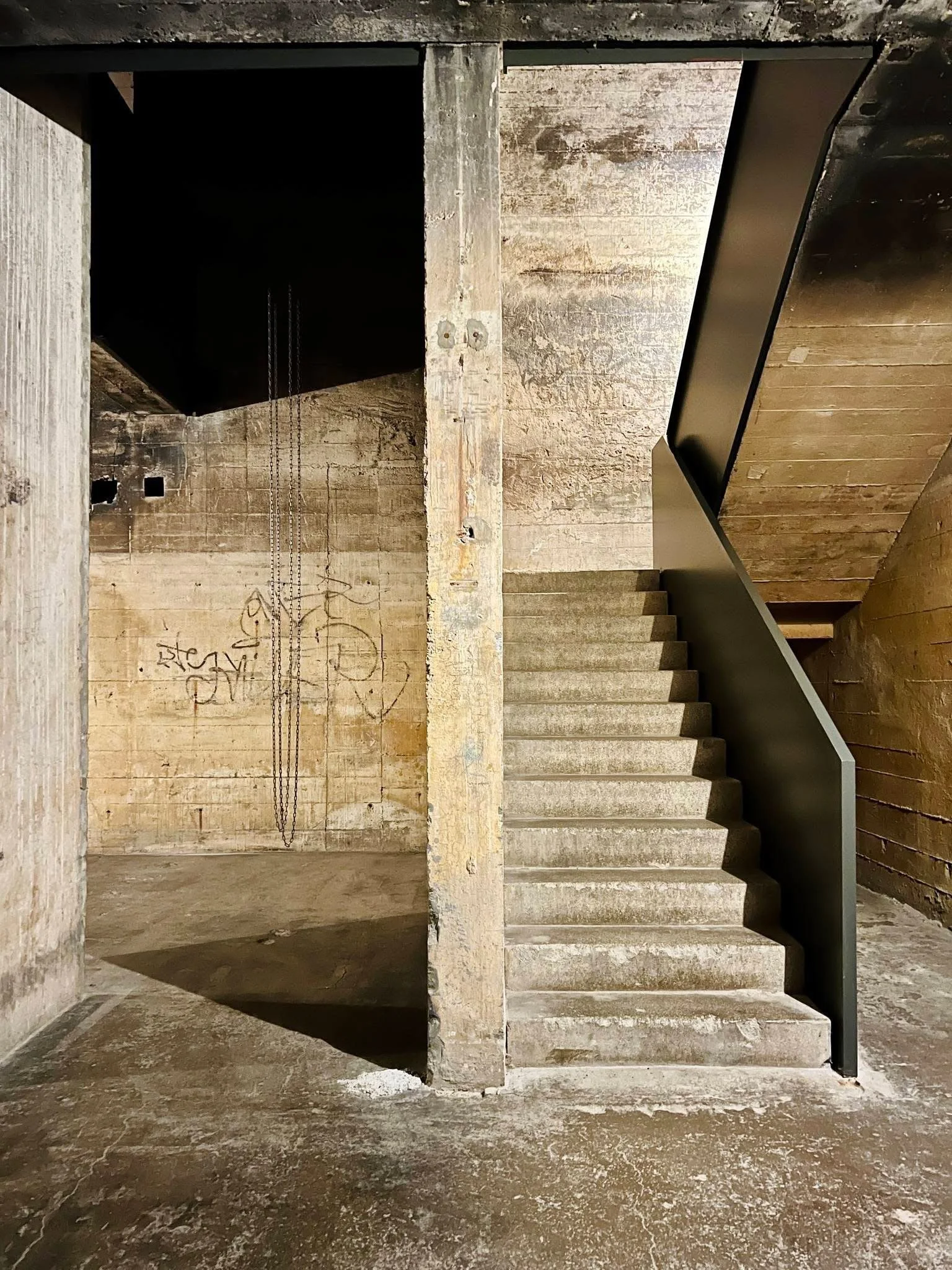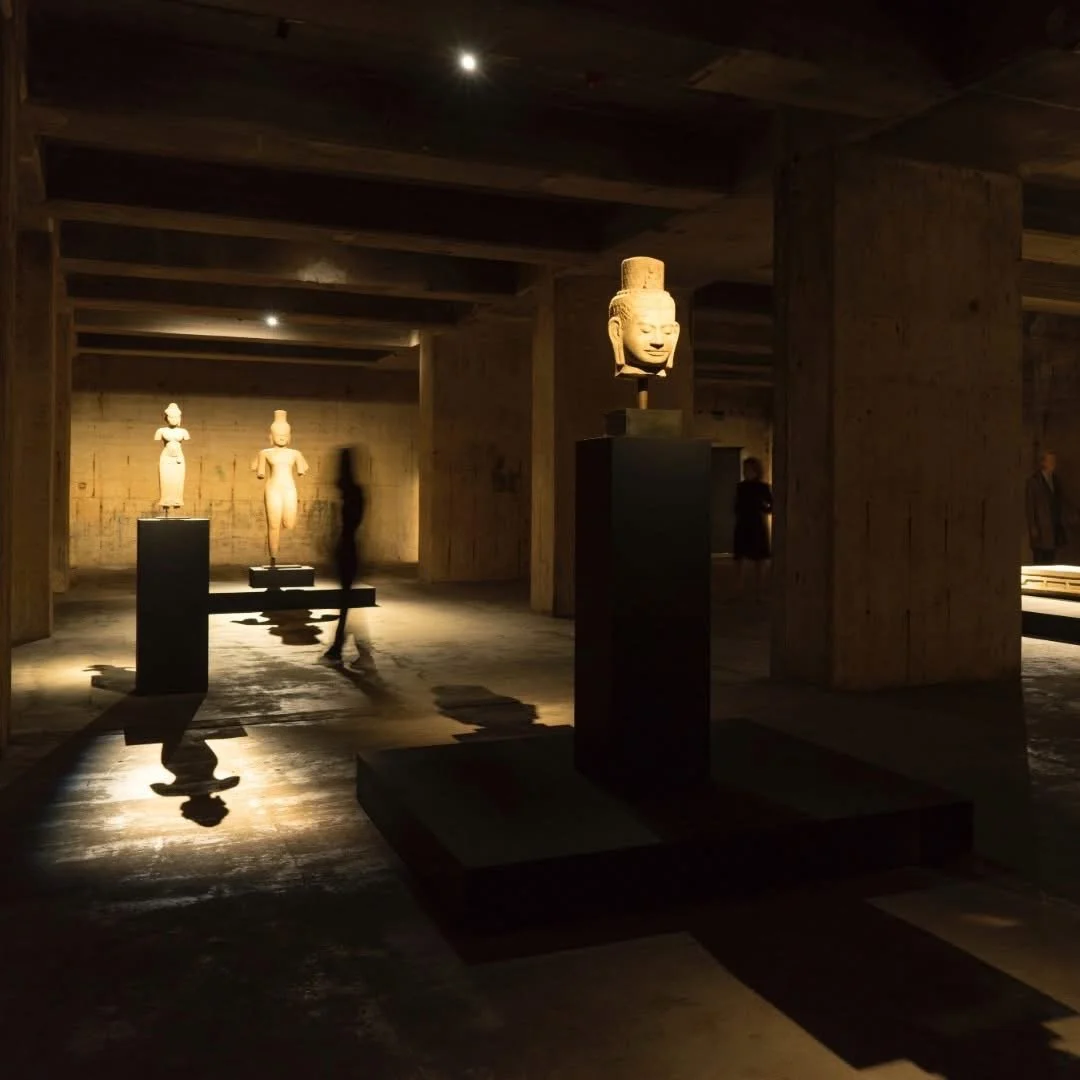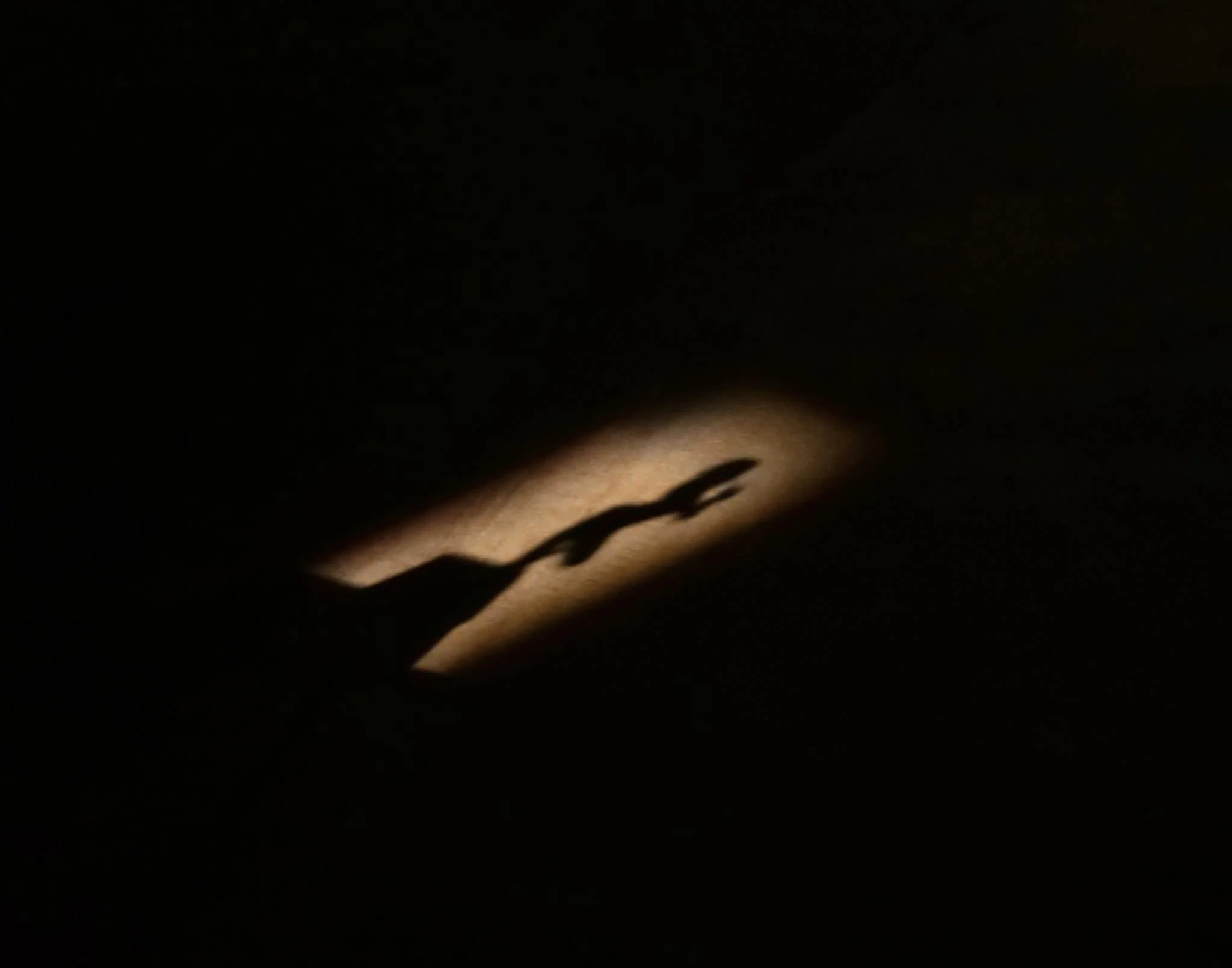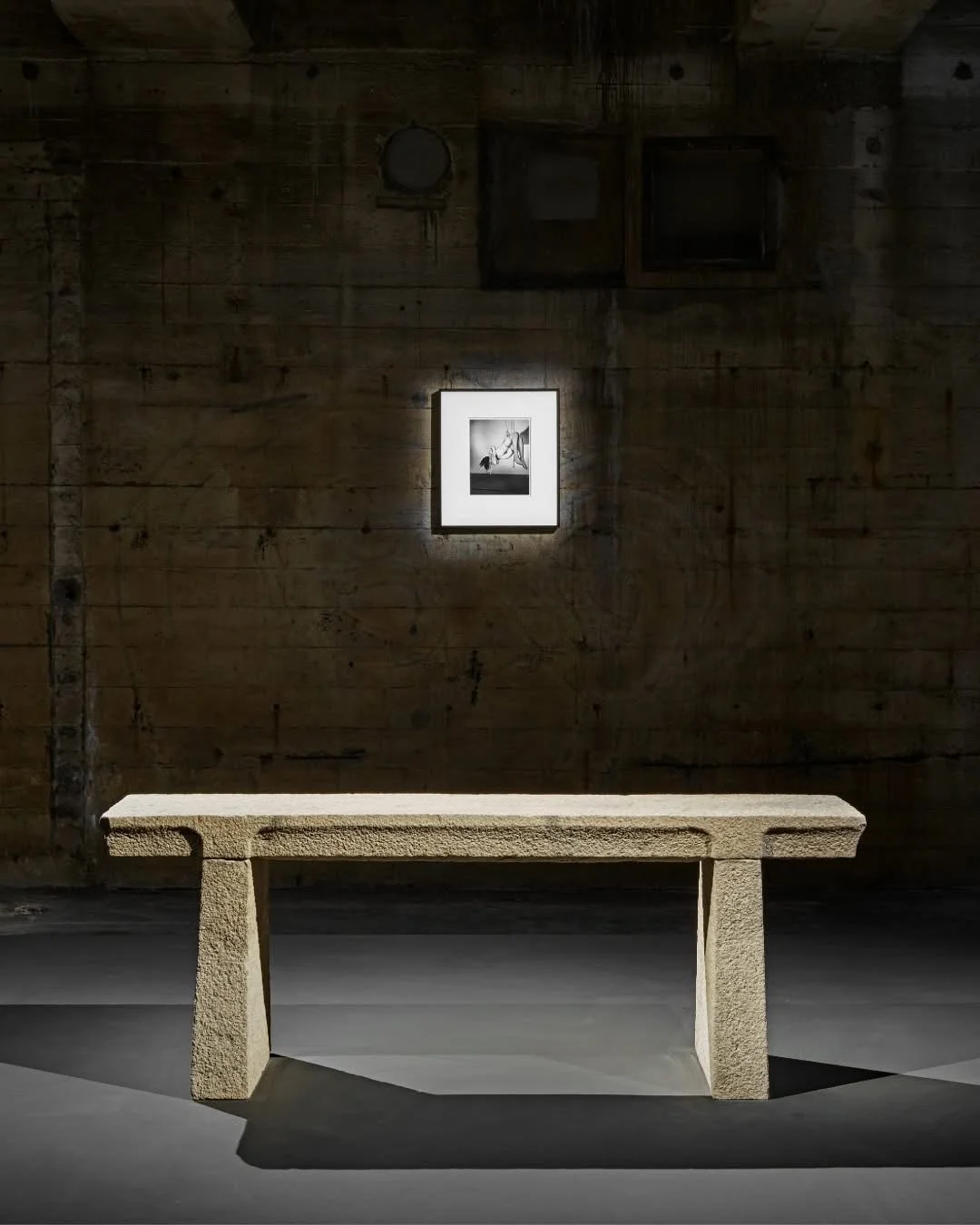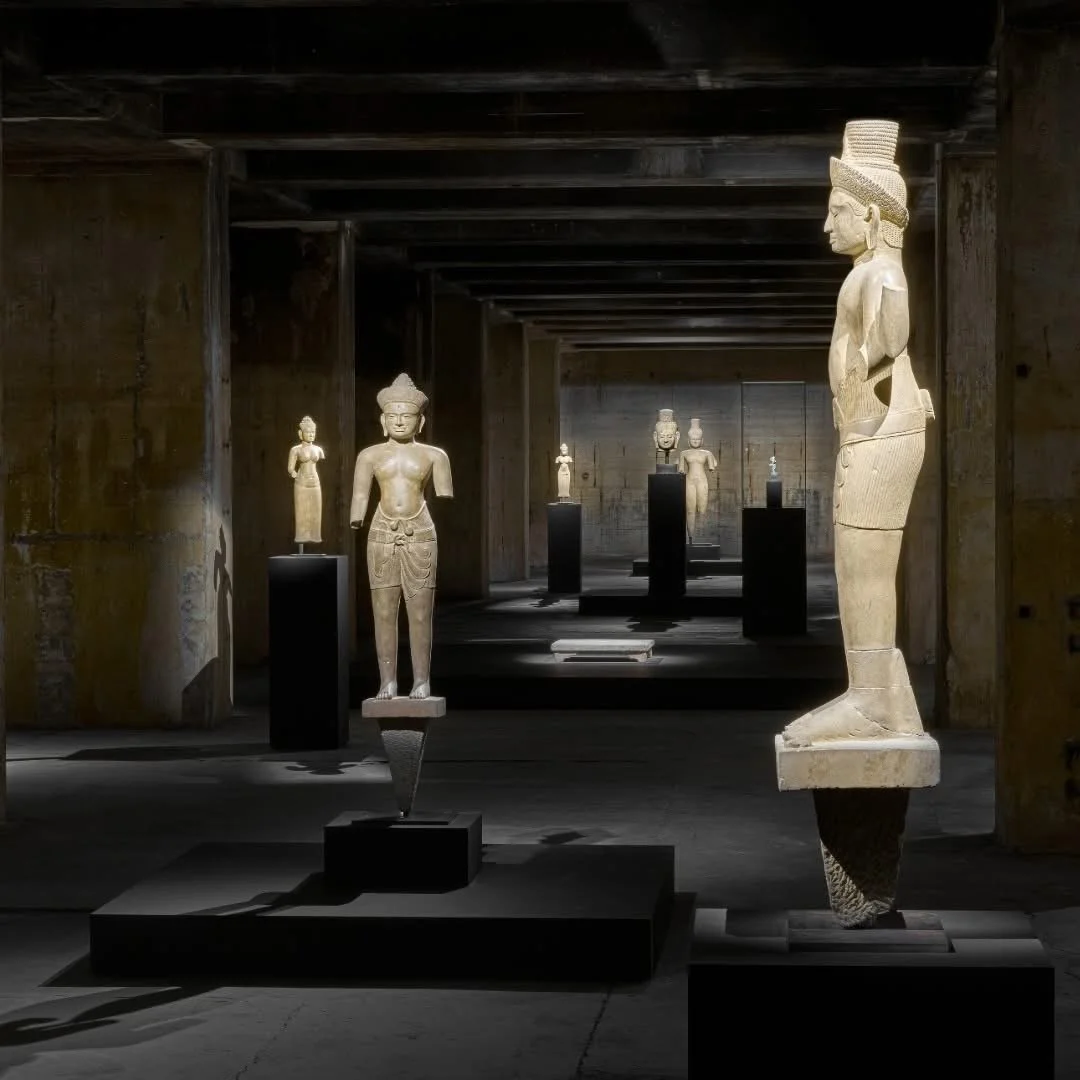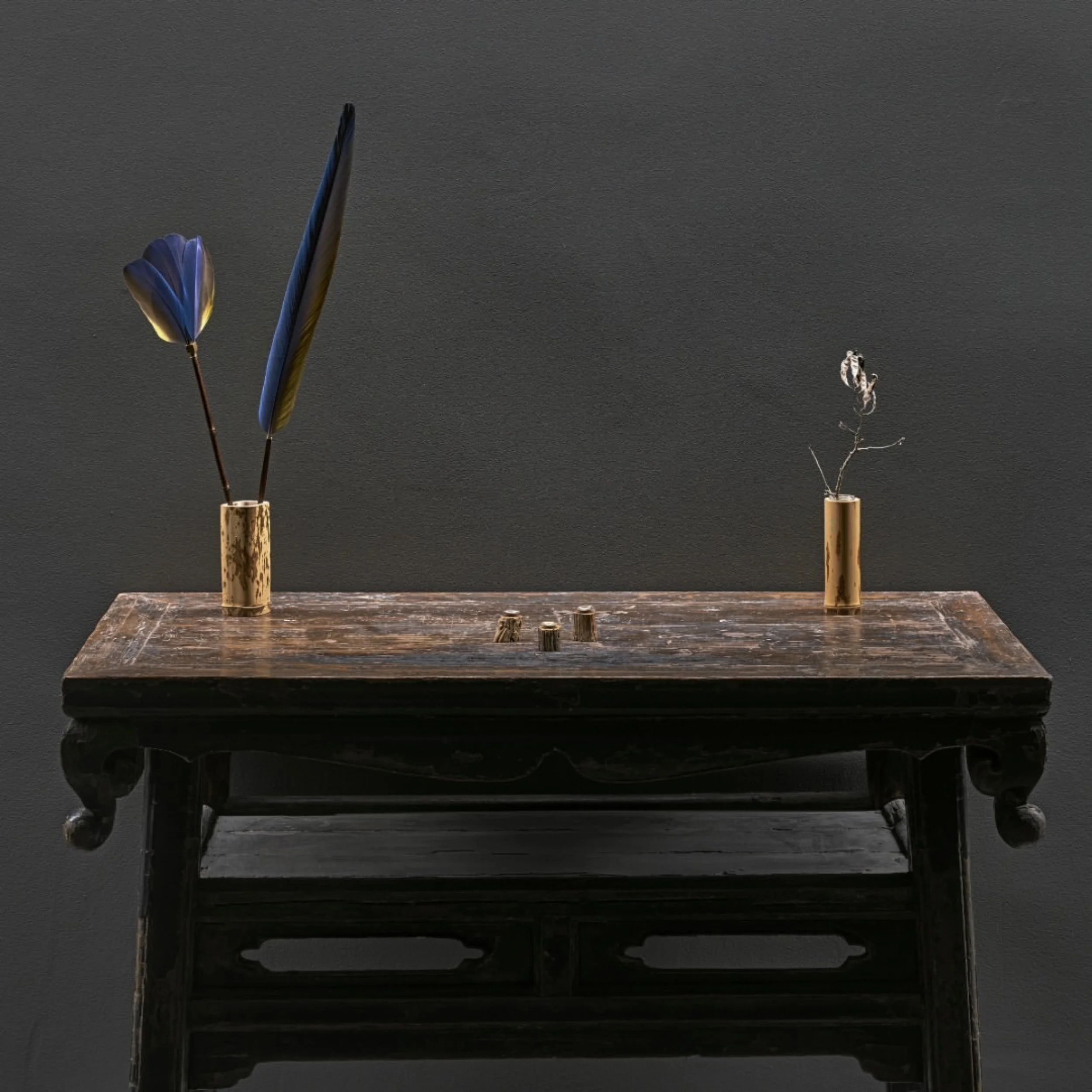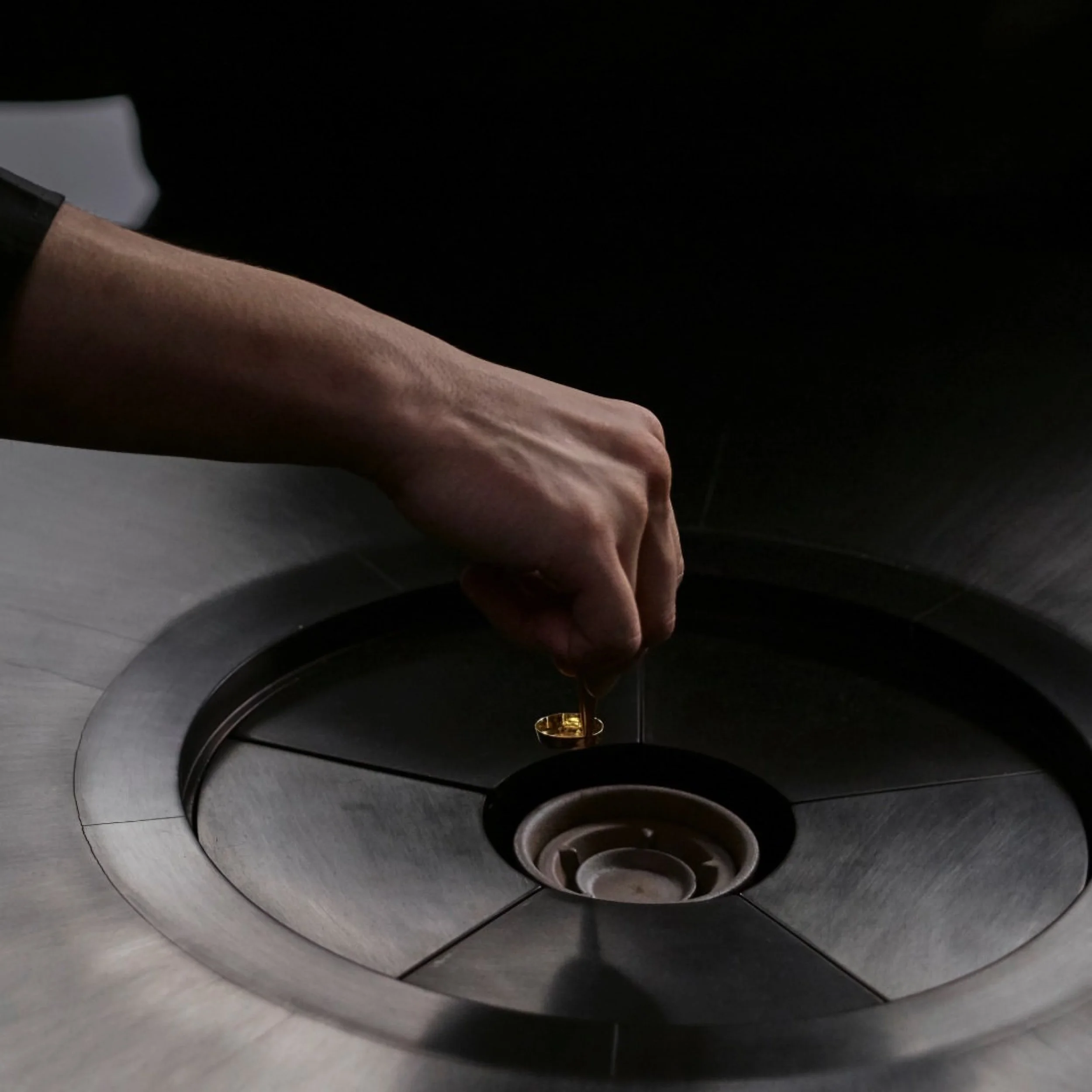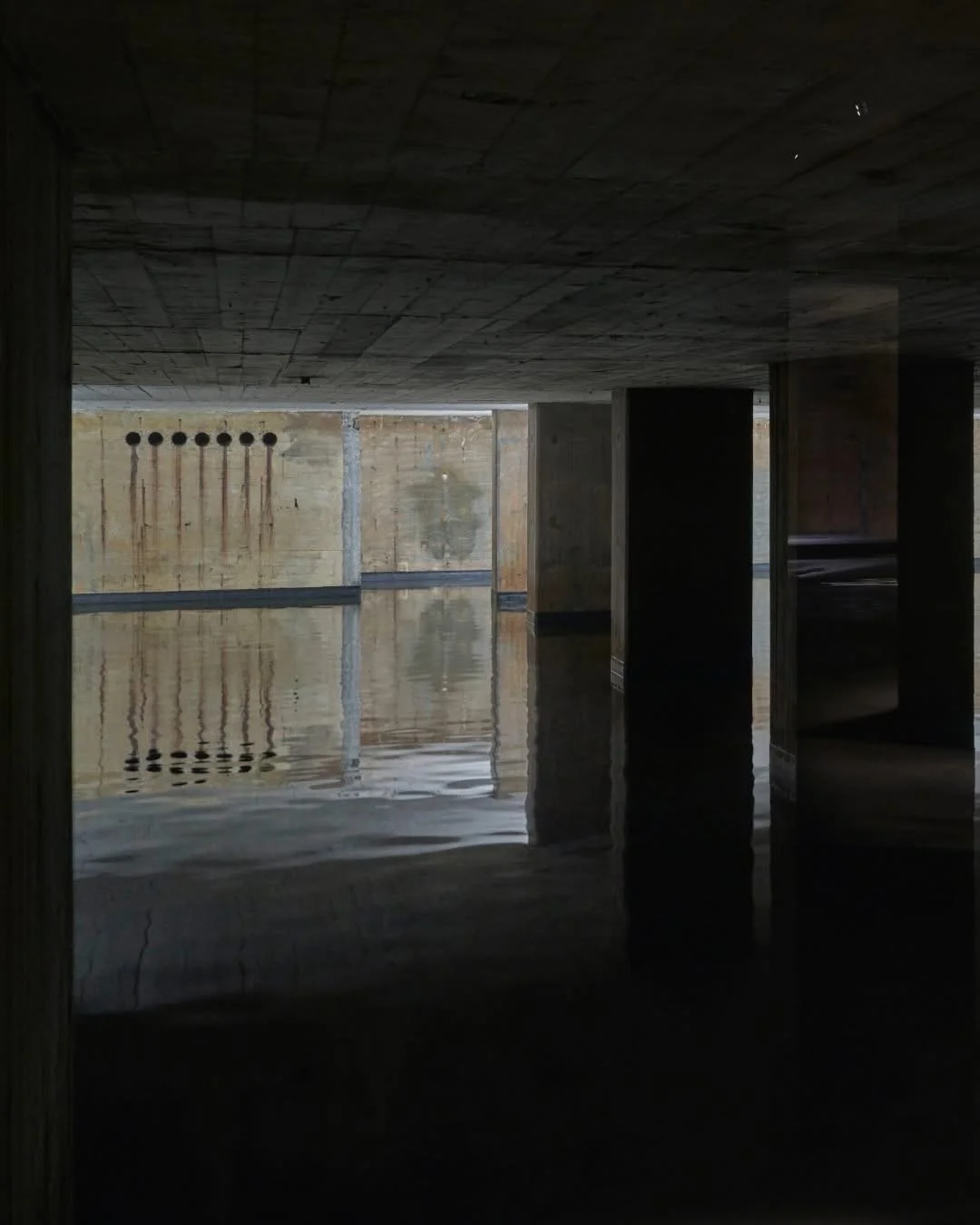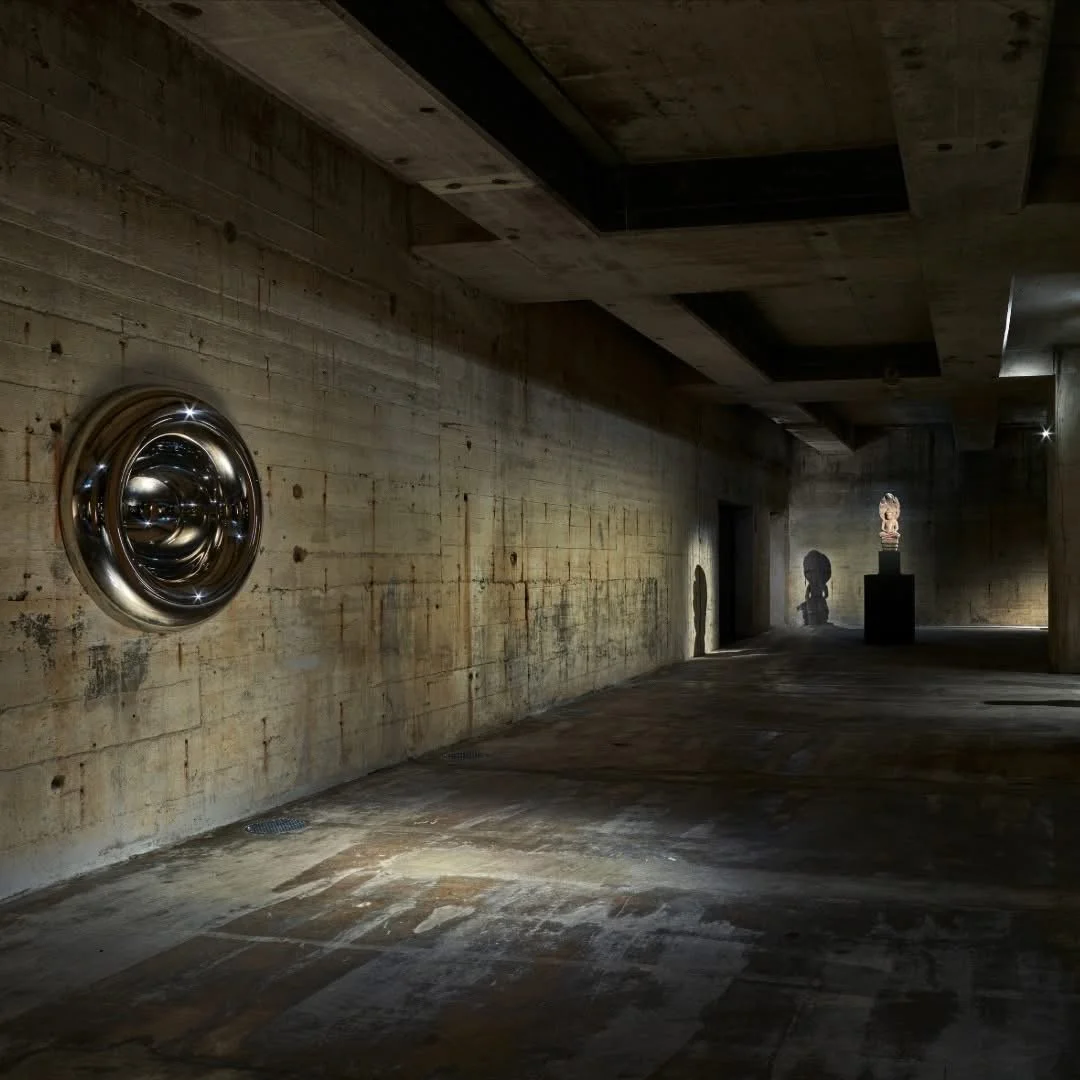A Transcendent Experience at The Feuerle Collection 🇩🇪
January 17th, 2025
📍Berlin, Germany 🇩🇪
Grüße aus der Wildnis!
Have you ever encountered something so profound that it changed you? I have, on numerous occasions and in different ways, had transcendental experiences of God and myself—a close intimacy of knowing and being known in a way that is hard to put into words. I had another of those experiences during my first trip to Berlin this week when I visited The Feuerle Collection for a private showing and incense ceremony. Few experiences in life have left me without words, but I will do my best to illuminate.
As an immersive experience designer, I was drawn to their multi-sensory approach to viewing art, not outside of ourselves, but as an intimate reflection within ourselves. I was honored that they opened the gallery for me to have a private viewing and receive the magic that is their famed incense ceremony.
Due to their strict technology-free environment, I am using their photos to help depict what it felt like to participate in.
It was an unassuming structure, as grey as the cold January skies above it. Except for an unmarked metal door and a small sign on the wall, the WWII bunker was otherwise a windowless, doorless building made of concrete. I press a tiny doorbell button to be let in.
A petite woman opens the door to receive me; I walk into this dark and cavernous space. As the door shuts behind me, the world outside goes with it.
My host (whom I will refer to as my shadow guide) walks out from behind a large black curtain carrying a wooden tray with a black ceramic cup, organically shaped and full of hot tea—My taste buds tell me that it's partly blue lotus.
After being given the history of the building, my shadow guide invites me to follow her down the first set of stairs. She walked slowly and deliberately, wearing a black linen kimono and slippers. Her feet make no sound on the floor, which is good because even a tiny sound is magnified in this cavernous space, and I am the only guest there. For this experience, they have opened up the gallery specifically for me.
We make our way down to the bottom floor, where she invites me into the sound room, informing me that the room is intentionally dark, depriving the senses. This room is meant to wash clean the outside world, to prepare you to enter into the new one they have created.
Gong music begins playing softly amidst the silence. The contrast between the absence of sound and the vibration of sound was jarring and relaxing simultaneously. You do feel like you are entering into something new and unseen.
I'm invited to head towards the dim light to my right, only seen once my eyes have adjusted to the dark.
As I walk carefully forward, the light gets brighter as I turn; before me, the gallery opens up, and my breath is taken away.
What lies before me comes into focus, and I see that everything is dark, from entry to exit, and the entire space is shades of black. It's not a scary, ominous darkness but rather a deprivation of light that invites you to sharpen your focus on the artwork lighting that draws you in like a moth. What lay before me was an incredible landscape of light and dark, black and white, ancient and modern.
As a lover of modern minimalist design in architecture, I found the landscape of this place incredible. Mr. Feuerle was meticulously involved with the lighting design of the space, and the shadows cast by the art were as impressive as the collection itself.
I walk up to a small bronze sculpture enclosed in plexiglass, resting atop a pedestal. The deliberate placement of the warm-hued lighting is designed to shine through the object from multiple angles, casting shadows of the sculpture upon the floor. These shadows are just as crucial to the experience of the artwork as the sculptures themselves, as they draw you in. Each piece becomes magnified in size and importance by what you see on the floor below it.
As I slowly stroll the gallery, I find myself drawn to an ancient carved stone altar table, elevated on a large black platform, brightly illuminated so that it barely casts a shadow. High above it, on the facing wall, is a black-and-white photograph, with a broad white matting, of a woman bound in chains. The lighting, done so that it is squared perfectly around the frame, highlights the photo against the black walls surrounding everything. It shines like a beacon, and you realize you are surrounded by darkness. The bright table stands in contrast and unity with this brightly illuminated artwork, bridging the distance across the darkness.
I take a moment to sit on the floor before the table, to admire it, soak it all in. There is nobody in the expansive space except me and my shadow guide. She is always around me, yet never in my space. She's there, but she's not there. Unobtrusive yet available. In the dim lighting, I can barely see her.
In this space, there is no escape of light, no unused lighting that isn't directly pointing towards one of the artworks. As the observer, you disappear into the darkness like my shadow guide in her black kimono. I know she is watching me as I contemplate and receive the artwork. There is no judgment in this space, merely an invitation to be and feel one with the experience.
I stand back up, and I find myself slowly weaving my way around various pedestals with ancient bronze and stone statues, illuminated so that they cast beautiful shadows along the floor and walls. I am drawn to the shadows as much as the artwork itself. I can hear nothing but my breath. There is no sound in this mute and cavernous expanse.
My shadow guide invites me to follow her toward this dark, mirrored cube in the gallery's center. Compared to the illuminated picture here, everything is black. So, in this dark mirrored structure, I can see the artwork reflected and myself approaching.
I am asked to remove my jacket and shoes, then offered a black linen kimono, starched, heavily pressed, and tightly bound. My shadow guide offers me my obi sash, and I slide my feet into my black slippers. I am ready.
She gently knocks on the door, which opens up, and another woman's face greets me. A waft of incense fills my nostrils. Inside is a dim lighting different from the rest of the gallery. A giant meditation chair belonging to a high-status monk greets me in the center of the room.
A vase on the left with two feathered instruments rests on the altar table facing me. On the right is a dried botanical in a vase. A black bowl with solid gold tweezers sits next to three tiny sculptures resembling tree stumps. A small solid gold incense bowl rests upon each of them, with a different flavor to be tasted.
I am invited to sit next to the Master of Ceremony at this small, specially designed round lacquer table with five matching stools. I pull out my seat, gently lifting the heavy wooden stool without dragging it, preventing unnecessary noise. There's no noise anywhere except for our breath, and the space begs for silence. The Incense Master follows behind me and sits beside me on my left.
My shadow guide begins to prepare for the ceremony by walking in a wide arc around the table, one slow step at a time. She pauses briefly between each movement with intention, methodology, and purpose, lacking any hurry. Her dance ushers us into a new rhythm.
I could feel in my body that time had slowed down, and I became fully aware of the busyness in my mind because I was watching her movements and thinking, "Why is she moving so slowly?" It immediately dawned on me that you come face-to-face with yourself and the pace of your life at this point of discomfort.
I was keenly aware of how much I wanted to move my body, to be in motion. Something I am used to feeling in meditation. I reminded myself this was a presence practice, a different form of meditation.
My shadow guide slowly walks to the altar table, picks up the gold tweezers out of the large earthen vessel, and uses those to gently clasp the tiny gold bowl that the first of the three flavors rests upon. The pure essence gets placed in the middle of this larger earthen bowl, and the gold tweezers are placed back into the same bowl so that both hands are free to lift the bowl gently, quietly, and slowly off the table.
Like a soldier, she does an about-face, and with slowness and intention, she methodically walks in that same wide arc back around the Master of Ceremony. She stands between us and, with as little noise as possible, rests the bowl on the table. She takes a step back, which signals the Master of Ceremony to turn to the right and pick up the bowl herself. Without any noise, she gently lowers the bowl onto the table before her.
In another movement completely separate from the last, she lifts the gold tweezers from the bowl and pauses before using them to place the tiny gold bowl of incense into the center of the table containing a convection heating element.
She then places the gold tweezers back into the bowl, picks up the bowl with both hands and places it back between us to be received by my shadow guide. As the assistant, she gently lifts the bowl with both hands and slowly and methodically walks back in that same arc behind to return to the altar table.
The Master of Ceremony and I are staring at the incense; there is no visible smoke or burning or fire. The smell of the incense intensifies. It is slightly stronger than what you smell as you enter the incense room because it is the only fragrance allowed. As guests, we are invited to not smoke or eat heavily flavorful foods (like a curry) 24 hours before the ceremony—no perfumes, no strong smells so that nothing competes with the incense.
My shadow guide returns the bowl to the altar table, where she picks up a feathered instrument (which was naturally collected from a blue macaw) created into a wafting wand. With those same slow and deliberate steps, she walks back towards us, and I remember thinking, "There are three incense; these same slow movements will happen three times!" No one is in a rush, and I settle even deeper into the experience. The wand is offered to the Master of Ceremony, who pauses for a breath before receiving the wand. The scent of the incense begins to get stronger; I start to breathe deeper inhales and fuller exhales, rhythmically, long, unhurried, moving as slowly as the environment around me.
I'm allowed a couple breasts before the Ceremony Master, in a single smooth movement, takes the feathered wand and moves it over the incense and up to my face so that the essence of the incense is wafted past my nose. It's not a fluttered movement, just a single pass which she times to my breath. After a handful of tastes, the reverse process is done to move on to the next wood.
All of this happens three times: no steps are missed. Full attention is paid to every detail, all done deliberately slowly. After the final incense has been tasted, the assistant stands at attention next to the altar table, signaling the ceremony's completion.
The Master of Ceremony waits for me to stand up, then bows to me to close out time together.
With an hour left to experience the rest of the gallery, I start by walking to the lake room. Because of the minimal lighting, it takes my eyes a minute to adjust to what I'm seeing on the other side of the glass windows. There is a pool of ink-black water. I'm told it's only a few meters deep. It's as if something is vibrating inside the water because there are ripples, gentle stirrings. I'm told there's not a mechanism inside doing that; it is the vibration of the building itself ripping into the water.
Large concrete columns rise from the pool. It's expensive, and it draws you in like a vast wasteland. I don't know what feels more foreign, me or the water. I can barely take my eyes off it.
Incredible; the entire place is incredible! It's impossible to take it all in, and I wished I could take pictures, but there's no way the pictures could ever do justice to what this experience is like because it's not something you experience with just your eyes; you experience it with all of your senses. A truly immersive experience. I will not soon forget this, and I plan to come back for one of their gong baths.
With Love,
Jennifer
Background info on the incense ceremony: As one of China's oldest traditions, dating back over 2,000 years, the practice of the art of incense is a spiritual discipline once reserved for scholars and high monks, Emperors and dignitaries of the court.
The Feuerle Collection is the first art museum to present the theme of Chinese incense culture and the only place in the world where the incense ceremony is introduced as an artistic practice, part of a curatorial work in dialogue with, and surrounded by, ancient and contemporary art.
The Feuerle Incense Ceremony was created by Désiré Feuerle, collector and co-founder of The Feuerle Collection, as a contemporary yet authentic version of this ancient discipline.
While being related to the traditional knowledge of Chinese Incense Masters, The Feuerle Incense Ceremony is an unprecedented art performance for which all details have been originally conceived by Désiré Feuerle.
It has been recognized by Master Wang Chun-Chin, the most important scholar and Master of the traditional Imperial Chinese incense ceremony, who was present at the press presentation when the Incense Room officially opened.The Incense Room was designed by the collector together with architect John Pawson.

